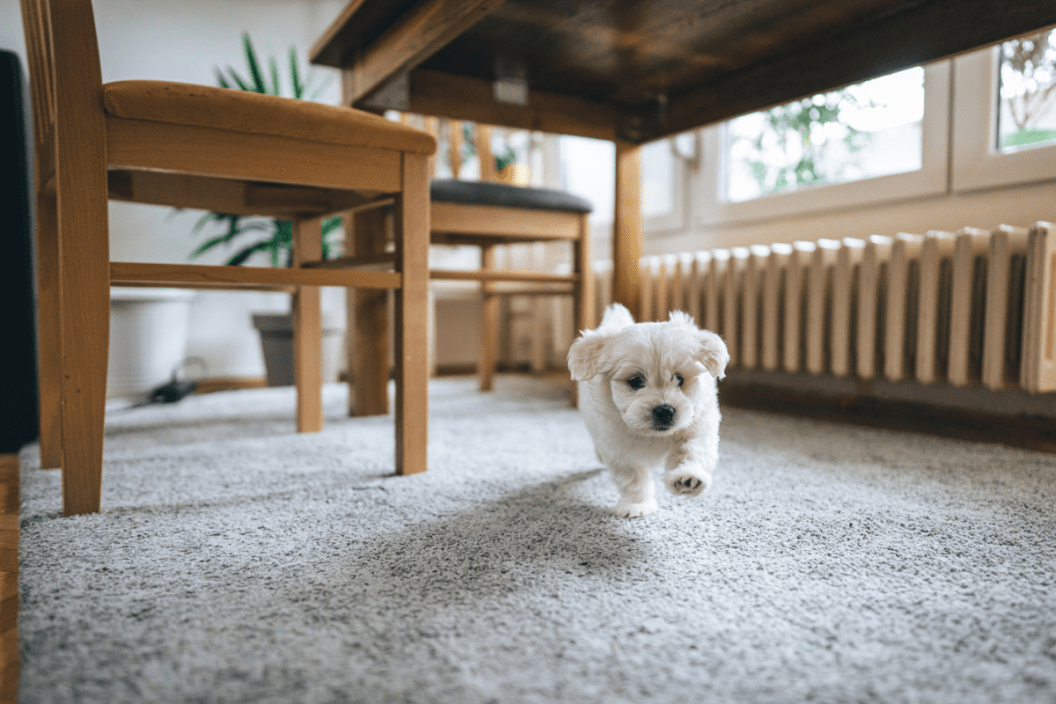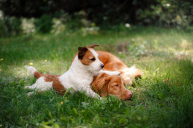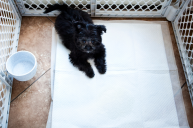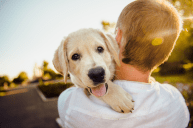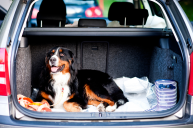Getting a puppy can be exciting and nerve-wracking all at the same time. Sure, puppies are cute, but they're also a lot of work—and that work begins before you even bring your new pet home. Prospective puppy owners need to pick up all the supplies on their new puppy checklist, become familiar with the recommended puppy vaccine schedule, and maybe even figure out how to introduce a puppy to their current dog. And your job doesn't end there! There are many important things to establish during your first week with a new puppy. This includes potty training your puppy, and depending on how quickly they get stinky, learning how to give your new puppy a bath. Puppies are curious creatures, and will want to explore their new environment. Whether they're finding teething relief on your coffee table legs or tearing up a tasty-looking pillow, your puppy will be all over it if it's within reach. Learning how to puppy-proof your house will save you a lot of frustration and keep your dog safe. Spoiler alert, you're going to become very well acquainted with child-safe latches, dog gates, and locked doors.
As much work as it is to puppy-proof your house, to any dog owner their pooch's safety is definitely worth the price. With that said, here are the best tips for puppy-proofing your house.
1. Keep the Floor Clean
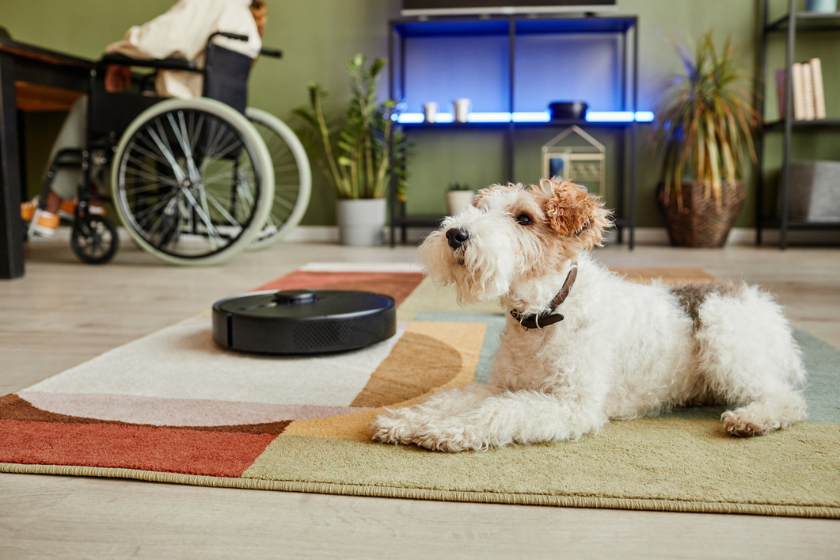
Things you might not even realize are down there—like paperclips, rubber bands, pieces of cardboard, hair ties, and food crumbs—can be major hazards. Puppies will scoop up just about anything to see how it tastes, and this urge to put things in their mouths only increases when they begin teething. All these tiny household objects can become lodged in your dog's throat, making them a choking hazard and possibly facilitating an expensive trip to the vet if a blockage occurs. When it comes to puppy-proofing your house, keeping the floor clean is an ongoing step. This extends to invisible, hazards too. Be sure to take your shoes off at the door to avoid inadvertently bringing parvo into your home.
2. Bundle Up Cords
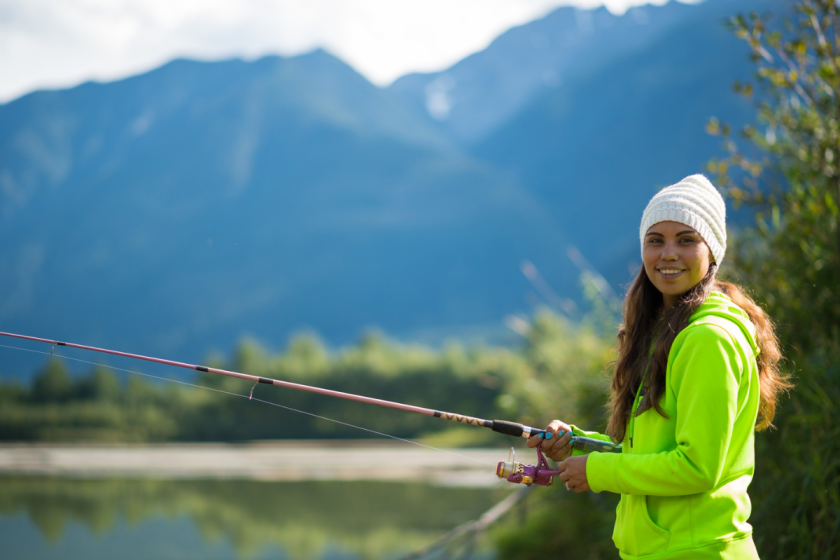
Did we mention that puppies chew on everything? Electrical cords from lamps, computer chargers, and appliances will look very interesting to a new pup. And don't even get us started on the cords from your blinds! They all dangle and move, enticing your pup to take a bite or start a game of tug—but playing with dangerous cords can lead to choking, mouth burns, electrocution, or strangulation. Cover, contain, or move all cords out of reach to keep your puppy safe. Providing your pup with a plethora of chew toys can also be a great way to discourage them from chowing down on a stray cord.
3. Give Your Puppy Space
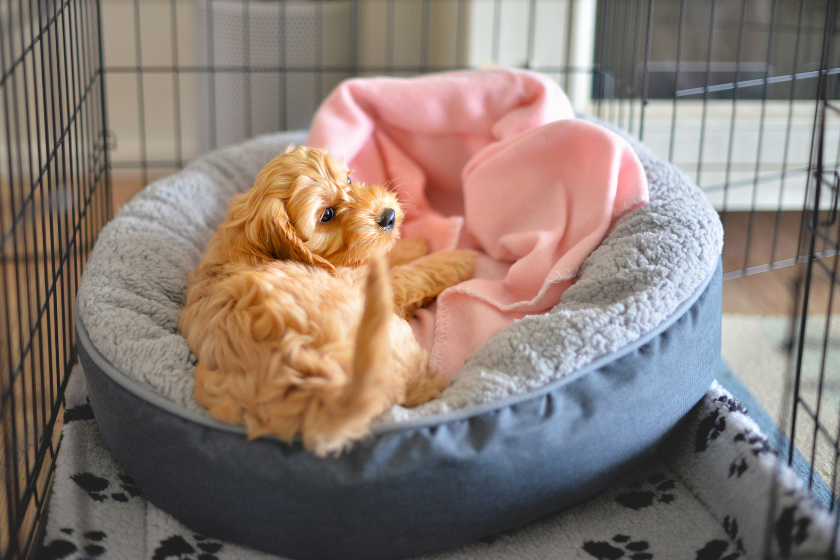
Crate training should begin as soon as your puppy comes home, so be sure to set up their space ahead of time. Dogs are den creatures and need somewhere to retreat to that's away from all the noise. A crate is also the easiest way to keep your puppy contained when it's not safe for them to be roaming, you're not home, or they need a time-out. Set up a space in your home that's specifically for your pup where they'll feel calm and relaxed. Crate training can benefit owners as well, as puppies will be more calm when taken to grooming appointments and vet visits in them.
4. Scan for Poisonous Plants

Plants can bring a touch of beauty into your home, but they can also be poisonous to pets. Problems that can arise from poisonous plant consumption range from moderate irritation such as vomitting and diarrhea, to more serious outcomes such as organ failure and even death. Some toxic houseplants for owners to watch out for include azaleas, daffodils, lilies, tulips, and more. Store these plants out of reach or in rooms your puppy won't have access to. Plants poisonous to your pup can also be found outdoors, even in your own garden. When you're outside, keep a watchful eye on your pup to ensure they aren't snacking on toxic plants like rhododendrons or tomato vines. And remember: Even pet-friendly plants can cause tummy problems if ingested in large amounts.
5. Lock Up Chemicals
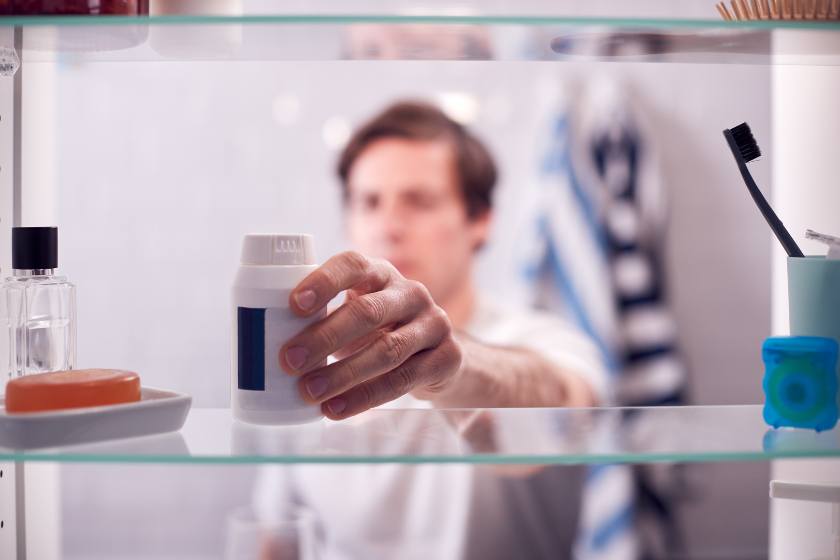
Cleaning products, rodent poisons, and medications might seem safe behind closed cabinet doors, but some pups are relentless. Dogs watch everything you do, so it won't take long for them figure out how you open the cabinet, and if they're determine they can chew right through the plastic container of a pill bottle. Consider keeping your dangerous chemicals on a high shelf, inside a locked cabinet, or stored in the garage.
6. Create Boundaries

Dog gates will be your best friend if you have a particularly curious or energetic pup. They keep pets out of areas that are unsafe, so you don't have to puppy-proof every room of the house. Opt for a taller gate if you're getting a larger breed or suspect your puppy might be able to jump over it.
7. Keep Trash Out of Reach

To a puppy, any man's trash is treasure—but it's a dangerous one. Dogs are drawn to trash because of their strong sense of smell and their interest in investigating new, strange scents. However, this can be dangerous for them as unsafe foods can be hiding in your trash can that pups cannot ingest, like chocolate or onions. The trash bag can also become stuck over your dog's head, leading to suffocation. To avoid these things from happening, keep your trash cans covered and be sure the lid is secure. If you want to be extra cautious, store the trash can in a cabinet or a room the puppy can't access.
8. Hide Fragile Objects
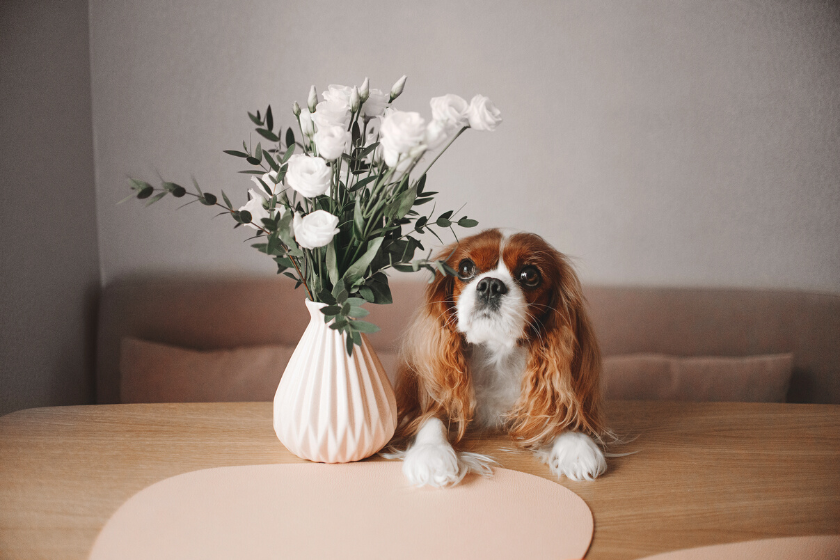
The family heirloom on your coffee table won't stand a chance against a puppy who has the zoomies. You don't have to pick favorites, it's possible to protect your priceless objects and precious pups at the same time! Relocate all fragile items that could be knocked over by a rambunctious Rover, like glass, ceramics, candles, lamps, and more.
9. Put Away Human Food
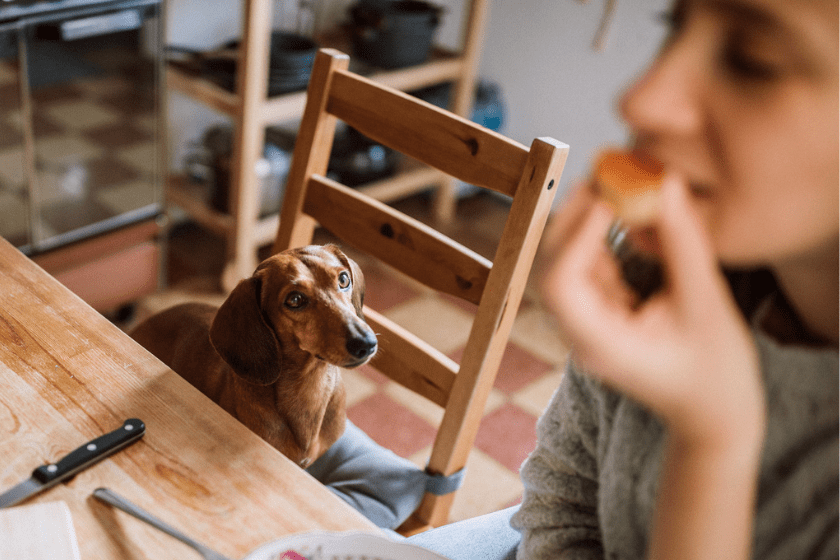
Puppies may look absolutely adorable when they beg for food, but try your best to resist because it can be dangerous for them. Just like with plants, many human foods can be unsafe for canines to consume. Keep toxic fruit, like grapes, and other produce off the counters and be sure your puppy can't sneak into the pantry.
Puppy-proofing is all about keeping your new furry friend safe. Sometimes you have to make a few lifestyle adjustments, but that's the cost of being a pet parent.
Do you have any puppy-proofing tips? Tell us on our Wide Open Pets Facebook page.
